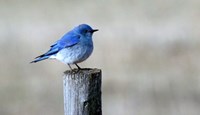- Lesson Plan (53)
- Distance Learning (17)
- Field Trips (11)
- Student Activities (10)
- Other Education Materials (5)
- Primary Sources (1)
- Teacher Reference Materials (1)
- Traveling Trunk (1)
- Acadia National Park (18)
- Haleakalā National Park (9)
- Everglades National Park (6)
- Glacier National Park (6)
- National Park of American Samoa (4)
- Carl Sandburg Home National Historic Site (3)
- Arches National Park (2)
- Castillo de San Marcos National Monument (2)
- Glacier Bay National Park & Preserve (2)
- Show More ...
- Science (77)
- Literacy and Language Arts (25)
- Social Studies (23)
- Math (7)
- 4.RI.1 (4)
- 4.RI.4 (4)
- 4.RI.7 (4)
- 5.SL.1 (4)
- 11-12.RH.7 (3)
- 4.RI.2 (3)
- 4.RI.3 (3)
- 4.RI.9 (3)
- 4.SL.1 (3)
- Show More ...
Showing 96 results for Bird Watching ...
Watching the Watershed
- Type: Distance Learning
- Grade Levels: Upper Elementary: Third Grade through Fifth Grade
We’ll use a model of a watershed to investigate how water moves through our landscape and have a chance to make our own model to test in the classroom.
"The Water Watch" Water: 4-6 Grade
- Type: Lesson Plan
- Grade Levels: Upper Elementary: Third Grade through Fifth Grade

The student will be able to: a) list two reasons why water conservation is necessary for the preservation of the Everglades, b) list two ways in which they can increase community involvement in water conservation, and c) produce a petition which lists ways to conserve water and get at least one hundred signatures on their petition.
Let's Go Whale Watching in Glacier Bay!
- Type: Distance Learning
- Grade Levels: Upper Elementary: Third Grade through Fifth Grade

Glacier Bay is home to one of the world's most intriguing marine mammals - the endangered Humpback Whale. Come join a Glacier Bay Park Ranger on an interactive journey to learn more about this endangered species. Students will take a look at how Humpback Whales interact with their environment and what Park Researchers are doing to protect them.
Early Birding
- Type: Field Trips
- Grade Levels: Middle School: Sixth Grade through Eighth Grade
This lesson is designed to introduce Middle School level students to basic bird identification to some of the common, and a few rare but easily identified,birds and waterfowl found along and around the Niobrara National Scenic River.
Listening to Birds
3rd Grade Birding
- Type: Field Trips
- Grade Levels: Upper Elementary: Third Grade through Fifth Grade
Think Like a Bird
- Type: Student Activities
- Grade Levels: Upper Elementary: Third Grade through Fifth Grade
Students will understand the complexities of nest building by attempting to design and build a nest themselves.
Maui Forest Birds
- Type: Lesson Plan
- Grade Levels: High School: Ninth Grade through Twelfth Grade

In Hawaiian mythology, the demigod Māui loved the forest birds and painted them bright colors for all to see and enjoy. The native Hawaiians loved to use the feathers of these forest birds to create lei kāmoe (feathered lei), mahiole (feathered helmets), kāhili (feathered standards), and ʻahu ʻula (feathered cloaks). These birds’ populations have been steadily declining since European settlers came in the 19th century bringing non-native plants and animals.
Birds Traveling Trunk
Bird Data Scientist
Identifying Birds of Acadia
- Type: Lesson Plan
- Grade Levels: Lower Elementary: Pre-Kindergarten through Second Grade
Bird Beak Adaptaions
- Type: Lesson Plan
- Grade Levels: Upper Elementary: Third Grade through Fifth Grade
Climate Change & Bird Range
- Type: Lesson Plan
- Grade Levels: High School: Ninth Grade through Twelfth Grade

Tule Springs Expedition Research Learning Center partners with our local Audubon Society Chapter to participate in the Climate Watch bird survey citizen science project. Citizen scientists across North America report the data they collected during these surveys to help document how bird species are responding to climate change and shifting their ranges. This activity explores how different climate change scenarios may affect bird populations locally. Author: Jake Johnson & Lauren Parry
Investigating Bird Migration and Climate Change
Virtual: Grades 3-8, Acadia's Birds
- Type: Distance Learning
- Grade Levels: Upper Elementary: Third Grade through Fifth Grade
Feathers, beaks and special feet, birds have a diverse array of adaptations for survival! In this lesson, we will investigate several adaptive behaviors and structures that make birds so successful. (45 minutes)
"Build A Bird Nest" Wildlife: 4-6 Grade
- Type: Lesson Plan
- Grade Levels: Upper Elementary: Third Grade through Fifth Grade

Our "Wildlife" unit contains various lesson plans, each taking 20 minutes to an hour to complete, and targeted mainly at 4th-6th grade students. A class needn't complete every lesson in the unit, though some lessons do refer to one another and are better done in sequence. Each lesson comes with its own set of objectives and resources as well as suggestions for related activities.
Mature Forest Mime
I Notice, I Wonder: Bar Island
Johnstown Flood Museum: Academy-Award winning film, "The Johnstown Flood"
I Notice I Wonder: Seafoam on the Coast
- Type: Student Activities
- Grade Levels: Lower Elementary: Pre-Kindergarten through Second Grade
I notice I wonder is an opportunity for students to watch videos and explore phenomena in Acadia National Park. Sea foam is a unique part of the coastline.










